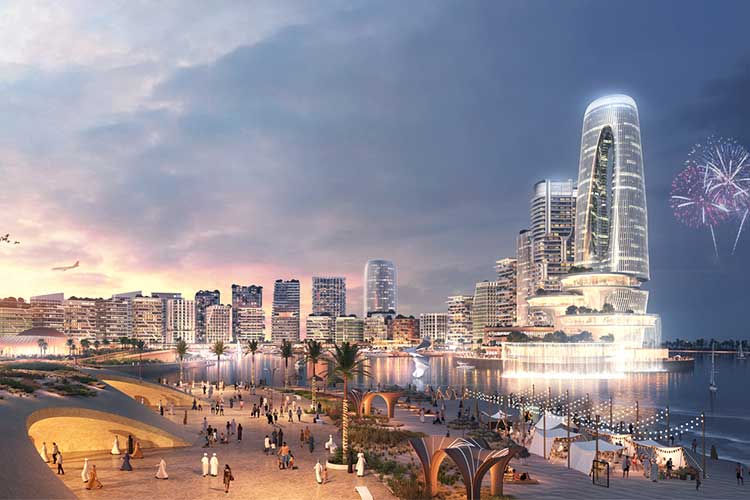

The $1.3 billion project in Muscat covers an area of 3.3 million square metres
March 19, 2024 | Staff Reporter | Oman | Facilities Management

Zaha Hadid Architects has unveiled a large-scale project for the redevelopment of the Al Khuwair waterfront in downtown Muscat, the capital of Oman. The $1.3 billion project covers an area of 3.3 million square metres. It aims to revitalise the area through sustainability-led design principles to accommodate the expected population growth, which is expected to almost double by 2040. The plans are developed in collaboration with Buro Happold to incorporate and transform the existing buildings on site, introduce coastal and climate resilience measures, and create an efficient transit-oriented infrastructure.
As an increasingly attractive destination, the city of Muscat welcomes over 3 million tourists a year. It is expected to grow its population from 1.5 million to 2.7 million inhabitants within the next 15 years. To react to this growing pressure, Oman’s Ministry of Housing and Urban Planning (MoHUP) has launched this large-scale project to transform the existing administrative and industrial area of the city into a new urban district, expected to house a population of 64,500.
Seamlessly integrated within the urban fabric of Muscat, Al Khuwair will create a bridge between the coastal landscapes of the Arabian Sea and the Hajar Mountains that surround the city. The project is designed to connect local and international communities while embracing a sustainable vision for the future that honors Muscat’s heritage.
Paolo Zilli, Project Director and Associate Director at Zaha Hadid Architects
The team defined five key areas of the new district: a marina, a recreational waterfront complete with beaches and sports facilities, a canal walkway, a cultural quarter, and a Ministry campus. Residential areas and mixed-use buildings are also included, along with arts, culture, and leisure spaces. Included in the team is engineering, design, and advisory practice Buro Happold, who advised on strategies to create resilience, mitigate ‘urban heat island’ effects, and manage stormwater. Material reuse is also prioritized, as the project recycles materials and, wherever possible, retrofits the existing buildings through a programme of refurbishments.
In terms of transit infrastructure, the master plan proposes a compact and walkable development and introduces smart mobility through public transportation that includes light rail transit systems, bus rapid transit, and water taxis. Pedestrian mobility is also encouraged through the integration of passive shading systems. Ample cycle infrastructure completes the transit strategy that aims to minimize private vehicle use. The project also proposes onsite renewable energy production alongside passive design strategies to limit energy demand.